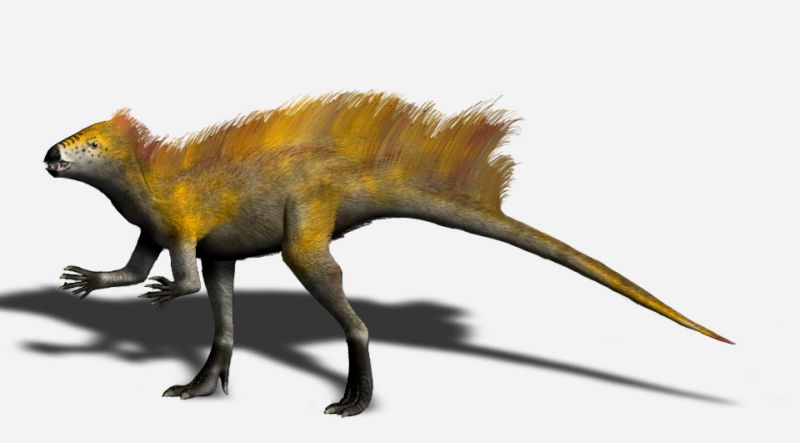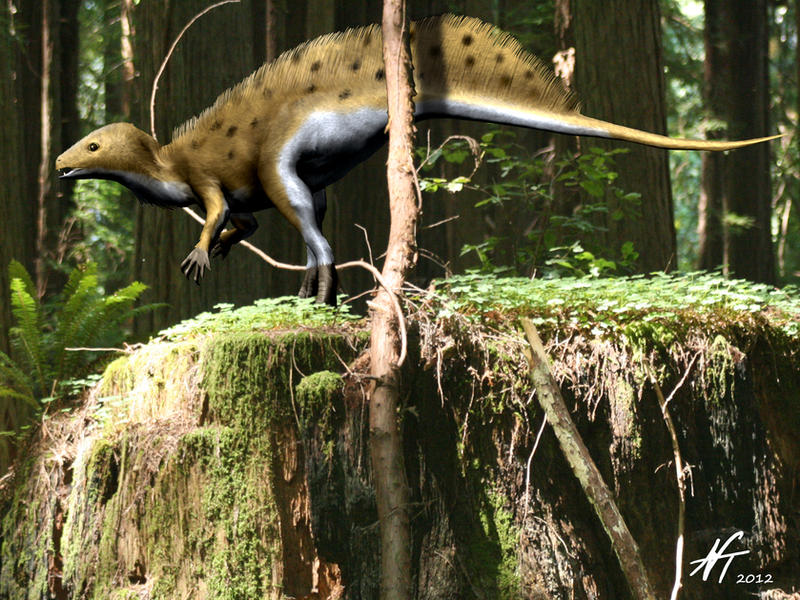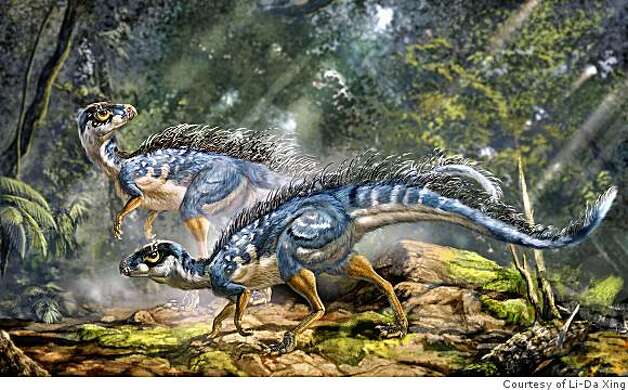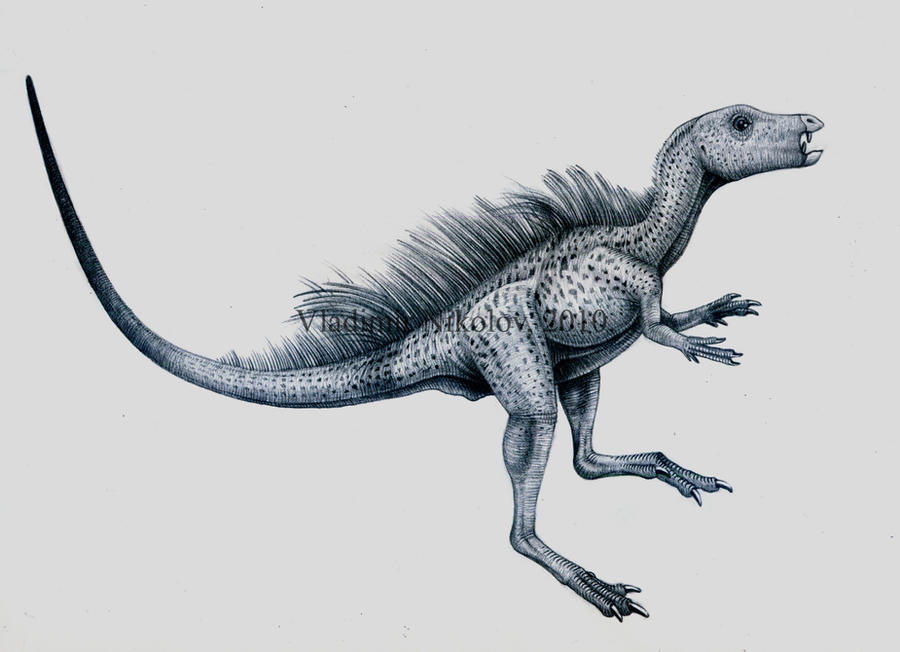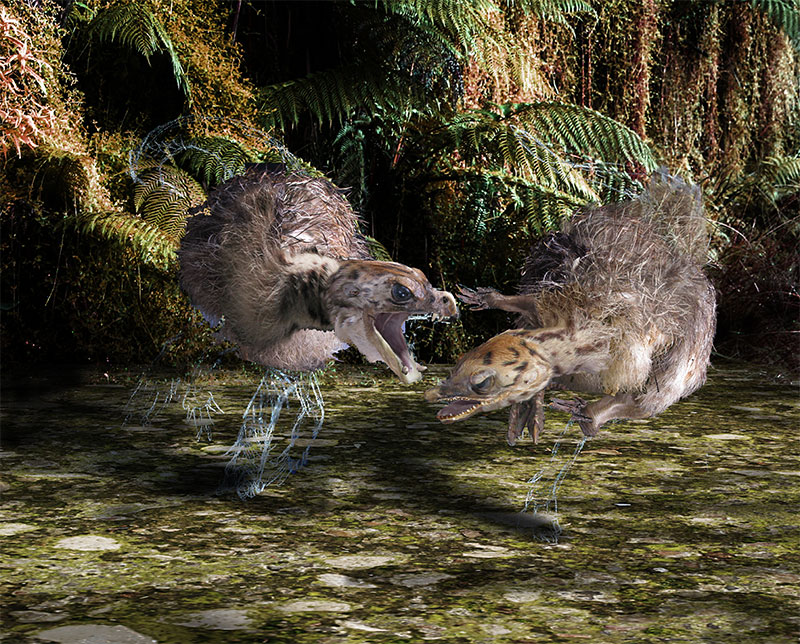[Recent Entries][Archive][Friends][User Info]
| January 21st, 2013 | |
|---|---|
| 06:19 pm [industrialterro] [Link] |
Tianyulong Tianyulong (возможный вариант транскрипции — «Тяньюйлун») — род вымерших птицетазовых динозавров из семейства Heterodontosauridae, живших в юрском периоде (около 160—152 миллионов лет назад) на территории нынешней Азии. Окаменелости теропода были найдены в провинции Ляонин, Китай. Впервые описан палеонтологом Zheng и его коллегами в 2009 году. Представлен одним видом — T. confuciusi. Передвигался на двух ногах. Найденный экземпляр, вероятно, не принадлежит взрослой особи: его длина составляет всего 71 сантиметр. Останки тяньюйлуна сохранили три пучка окаменевших волос длиной примерно 3,8 см (в районе хвоста — 5 см). По мнению китайских учёных, этот динозавр был покрыт жёстким волосовидным пухом. В связи с этим сотрудники Китайской Академии наук и Китайской Академии геологических наук предполагают, что перья начали образовываться у динозавров раньше, чем принято считать. Исследователи предполагают, что уже первые динозавры имели перья и некоторые виды их затем утратили. Другие учёные не воспринимают всерьёз эту гипотезу. Tianyulong (Chinese: 天宇龍; Pinyin: tiānyǔlóng; named for the Shandong Tianyu Museum of Nature where the holotype fossil is housed) is a genus of heterodontosaurid ornithischian dinosaur. The only species is T. confuciusi, whose remains were discovered in Jianchang County, Western Liaoning Province, China. The fossil was initially reported as being from the Early Cretaceous Jehol group. The fossil was collected at a locality transliterated as Linglengta or Linglongta. Lu et al., 2010, reported that these beds were actually part of the Tiaojishan Formation, dating from the late Jurassic period at least 158.5 million years ago. It is notable for the row of long, filamentous integumentary structures apparent on the back, tail and neck of the specimen. The similarity of these structures with those found on some theropods suggests their homology with feathers and raises the possibility that the earliest dinosaurs and their ancestors were covered with homologous dermal filamentous structures that can be considered primitive feathers ("proto-feathers"). The holotype consists of an incomplete skeleton preserving a partial skull and mandible, partial presacral vertebrae, proximal–middle caudal vertebrae, nearly complete right scapula, both humeri, the proximal end of the left ulna, partial pubes, both ischia, both femora, the right tibia and fibula and pes, as well as remains of long, singular and unbranched filamentous integumentary structures. The holotype is from a subadult individual that probably measured 70 cm in length based on the proportions of the related South African species Heterodontosaurus tucki. Tianyulong is classified as a heterodontosaurid, a group of small ornithischian dinosaur characterized by a slender body, long tail and a pair of enlarged canine-like tusks. They were herbivorous or possibly omnivorous. Until the discovery of Tianyulong, known members of the group were restricted to the Early Jurassic of South Africa, with one genus (Fruitadens) from the Late Jurassic of the USA, and possibly one additional genus (Echinodon) from the Early Cretaceous of England. The filamentous integumentary structures are preserved on three areas of the fossil: in one patch just below the neck, another one on the back, and the largest one above the tail. The hollow filaments are parallel to each other and are singular with no evidence of branching. They also appear to be relatively rigid, making them more analogous to the integumentary structures found on the tail of Psittacosaurus than to the proto-feather structures found in avian and non-avian theropods. Among the theropods, the structures in Tianyulong are most similar to the singular unbranched proto-feathers of Sinosauropteryx and Beipiaosaurus. The estimated length of the integumentary structures on the tail is about 60 mm which is seven times the height of a caudal vertebra. Their length and hollow nature argue against of them being subdermal structures such as collagen fibers. Such dermal structures have previously been reported only in derived theropods and ornithischians, and their discovery in Tianyulong extends the existence of such structures further down in the phylogenetic tree. However, the homology between the ornithischian filaments and the theropods' proto-feathers is not obvious. If the homology is supported, the consequence is that the common ancestor of both saurischians and ornithischians were covered by feather-like structures, and that groups for which skin impression are known such as the sauropods were only secondarily featherless. If the homology is not supported, it would indicate that these filamentous dermal structures evolved independently in saurischians and ornithischians, as well as in other archosaurs such as the pterosaurs. The authors (in supplementary information to their primary article) noted that discovery of similar filamentous structures in the theropod Beipiaosaurus bolstered the idea that the structures on Tianyulong are homologous with feathers. Both the filaments of Tianyulong and the filaments of Beipiaosaurus were long, singular, and unbranched. In Beipiaosaurus, however, the filaments were flattened. In Tianyulong, the filaments were round in cross section, and therefore closer in structure to the earliest forms of feathers predicted by developmental models.
Tags: Вымершие рептилии, Юра, авеметатарзалии, архозавроморфы, архозавры, гетеродонтозавры, диапсиды, динозавроморфы, динозавры, птицетазовые |
